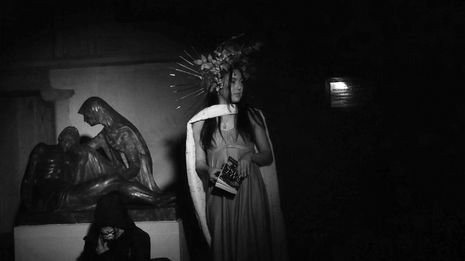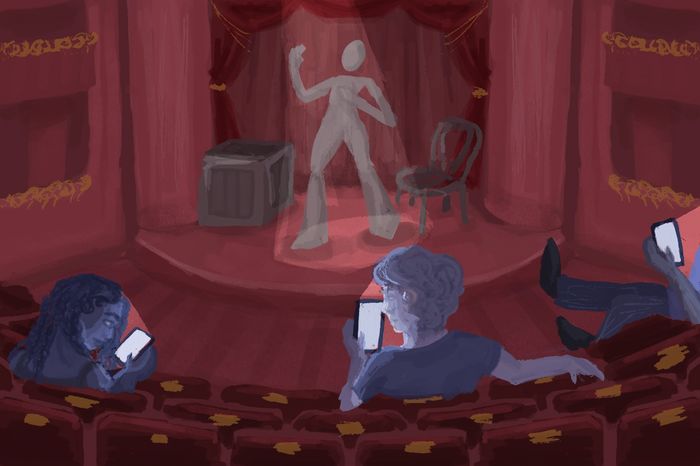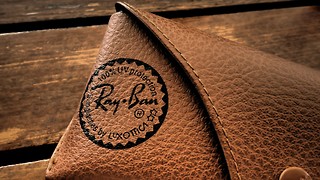In conversation with Jemima Proctor & Sophie Daily-Hunt: what makes a great costume designer?
Kaitlyn Butterly hosts a costume designer roundtable to explore the methods and niches behind one of Camdram’s most under-recognised roles

Costume is often one of the first things I notice when watching a play. Watching the Globe’s 2023 production of The Tempest highlighted how costume can bring a Renaissance play into the modern day, with its bold colours and clown costumes for the comic relief characters of Stephano and Trinculo allowing it to cater to younger audiences. It’s no surprise that costume designers here in Cambridge can bring student plays to life in the same way. Talking to Sophie Daily-Hunt, costume designer for Doctor Faustus and And Then There Were None, and Jemima Proctor, costume designer for Inferno and Emma, gave me more of an insight into what exactly goes into the role.
From the start of the interview, it becomes clear that both have a passion for sewing that started from an early age, despite not getting involved in the Cambridge theatre scene until recently. For Sophie, costume design became “the easiest way” to marry her two interests of theatre and sewing. This is echoed by Jemima, who found herself getting involved with Jesus College’s production of Inferno last term, after a conversation with a friend led to her being asked to join the costume team for the show. She describes how she wanted to be part “of this bigger thing,” whilst also having the opportunity to “test my skills”.
“For Sophie, costume design became ‘the easiest way’ to marry her two interests of theatre and sewing”
I was particularly curious about how collaborative the whole designing process is. Sophie shares how student theatre has to take into account the time constraints and workloads of its cast and crew. Whilst this obviously comes with its challenges, it also means that responsibilities and ideas are inevitably shared out. Jemima also emphasises the need for teamwork, “even in the most basic of senses,” such as determining sizing. But she also points to other ways designers can work with the rest of the crew: making shared Pinterest boards, exploring other forms of media for inspiration, and having conversations with actors and directors to understand what their visions are for each character. Both also draw attention to the importance of colour scheme, both on and off stage. With Doctor Faustus, Sophie explains that “even making sure that the colour of the pyrotechnics works well with the colour of the costumes” could create issues. And of course, there are also discussions with publicists about colour schemes to ensure cohesion between what the posters depict and what appears on stage.
“It’s ‘particularly touching’ to see the cast’s reaction to their costumes”
The resourcefulness that is required for the role becomes increasingly apparent. Whilst the ADC costume store is “the first port of call,” it is also true that it doesn’t have everything. Anything from charity shops, to Vinted, to items that the cast and crew already own, is fair game when it comes to finding fabrics and costumes to use for a show. Sophie adds, “you have to walk around always expecting to potentially find something, even if you’re just going to the supermarket”. This perceptiveness is shared by Jemima, who managed to make fake fur for one of the capes in Inferno out of wigs that had been thrown out of the ADC store room, alongside using zip ties to make a crown.
When asked about the best and most difficult part of costume design, both were eager to emphasise how satisfying and ultimately “worth it” the whole process is, in spite of any difficulties along the way. Sophie sums it up as “mostly enjoyable with moments of frustration,” such as when you realise “at some point that a measurement was wrong” meaning “you’re going to have to undo a lot of work that you’re proud of”. For Jemima, the toughest part is “managing it alongside” her busy schedule. But, like Sophie, she concludes that “it’s so worth it, and it’s so worth the investment of your time and energy”. For both, it seems that the most enjoyable part of their jobs is the satisfaction of seeing the actors wearing their costumes. “Seeing it all come together on stage,” is the best part for Sophie, whilst Jemima adds that it’s “particularly touching” to see the cast’s reaction to their costumes and how it helps them step into their character’s headspace.
Their final thoughts circle back to the start of the interview, keen to promote costume design to everyone. Sophie acknowledges that “we are both representing people that sew,” but there are still plenty of roles for people that can’t. “Even if you just like getting up in the morning and putting your outfit together,” you’re still asking yourself, “how are you representing your own character?” The same idea applies – only now, they say, you’re putting yourself in another character’s headspace instead! Jemima is equally optimistic as we finish, and encourages more people to take up the opportunities that costume design offers – “there’s a project out there for everybody”.
Want to share your thoughts on this article? Send us a letter to letters@varsity.co.uk or by using this form.
 Comment / Plastic pubs: the problem with Cambridge alehouses 5 January 2026
Comment / Plastic pubs: the problem with Cambridge alehouses 5 January 2026 News / Uni-linked firms rank among Cambridgeshire’s largest7 January 2026
News / Uni-linked firms rank among Cambridgeshire’s largest7 January 2026 News / New movement ‘Cambridge is Chopped’ launched to fight against hate crime7 January 2026
News / New movement ‘Cambridge is Chopped’ launched to fight against hate crime7 January 2026 News / SU stops offering student discounts8 January 2026
News / SU stops offering student discounts8 January 2026 News / Cambridge businesses concerned infrastructure delays will hurt growth5 January 2026
News / Cambridge businesses concerned infrastructure delays will hurt growth5 January 2026









